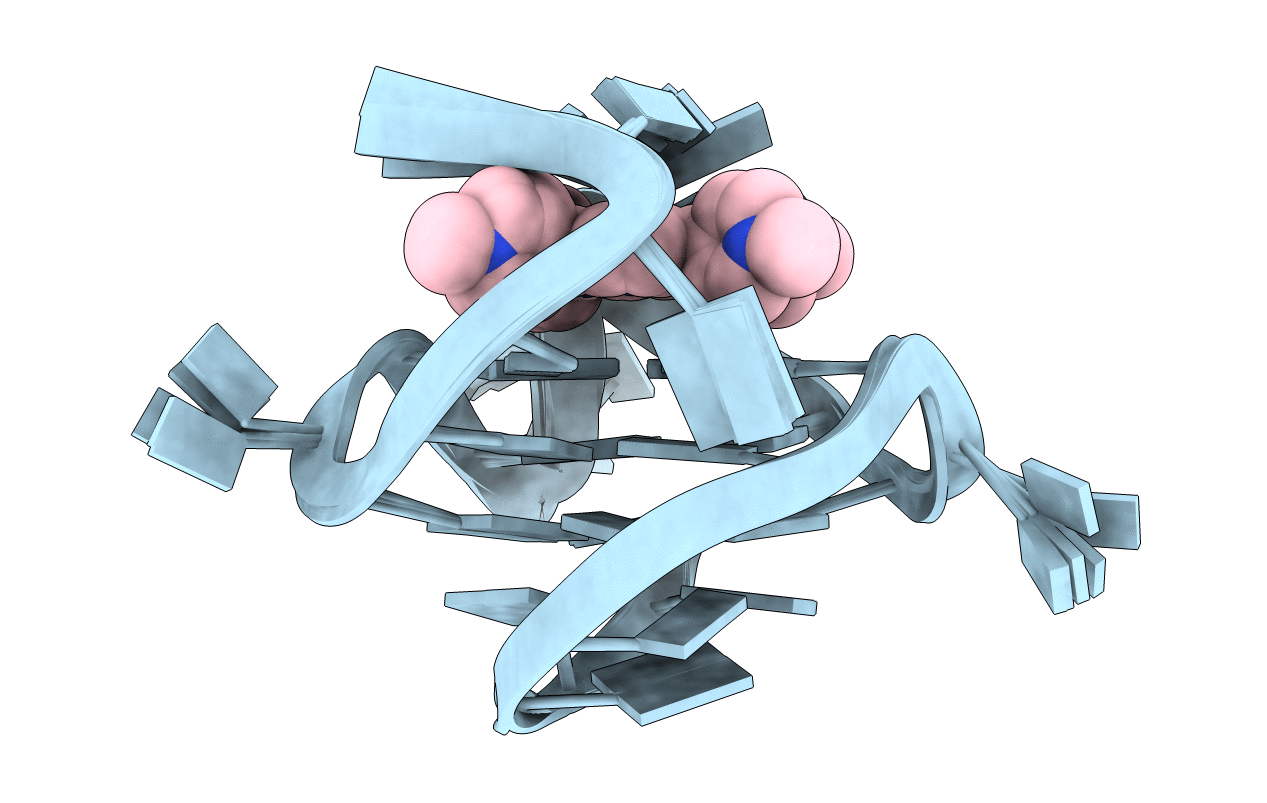
Deposition Date
2005-06-30
Release Date
2005-07-26
Last Version Date
2024-05-01
Entry Detail
PDB ID:
2A5R
Keywords:
Title:
Complex of tetra-(4-n-methylpyridyl) porphin with monomeric parallel-stranded DNA tetraplex, snap-back 3+1 3' G-tetrad, single-residue chain reversal loops, GAG triad in the context of GAAG diagonal loop, C-MYC promoter, NMR, 6 struct.
Biological Source:
Source Organism:
Homo sapiens (Taxon ID: 9606)
Method Details:
Experimental Method:
Conformers Calculated:
6
Conformers Submitted:
6
Selection Criteria:
structures with the least restraint violations


